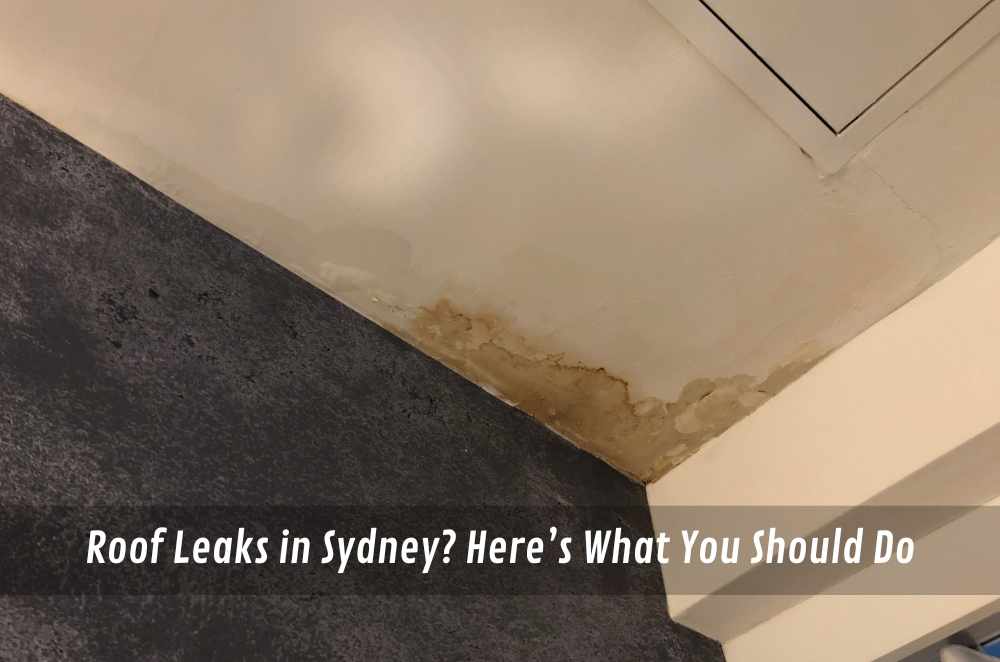
Your gutters are one of those items you do not think about until they fail to work. During Sydney's heavy rain and storm season, ignoring a roof gutter repair solution can be a nuisance and cause an outright water damage scenario. Left to their own devices, a minor leak will quickly become major and start causing costly repairs.
So, how do you know when your gutters are in distress? Look for overflowing water, sagging gutters, or rust spots.
Why gutter leaks matter more than you think
You might assume a small leak in your gutter isn’t a big deal. But that one drip? It’s like a ticking time bomb.
A leaking gutter can:
•Cause water to pool around your home’s foundations.
•This leads to rot in fascia boards and roof structures.
•Damage ceilings, walls, and internal paint
•Invite mould, mildew, and pest infestations.
In one job I handled in Inner West Sydney, the homeowner thought the brown stain on their living room ceiling was a plumbing issue. A gutter joint had separated months earlier, and water flowed down the wall cavity. The result was $8,000 in internal damage, all from an ignored $180 fix.
The subtle signs you’ve got a leak
It’s not always obvious when a gutter is leaking. But keep an eye (and ear) out for these clues:
•Watermarks or streaks on the exterior walls beneath gutters
•Rust spots or bubbling paint along gutter lines
•Plants growing in gutters (yes, really, that means blockage and overflow)
•Mouldy smell indoors after rain
•Sagging or detached sections of guttering
If you're unsure about potential roof issues, it's important to recognise early warning signs of a roof leak to prevent further damage.
Here’s a quick checklist I recommend after any significant storm:
•Walk the perimeter of your home and look for overflow marks.
•Inspect downpipes to make sure water is exiting correctly.
•Check your roof cavity for any damp insulation or staining.
Even if you’re not up for climbing a ladder, visual inspection from the ground can reveal a lot.
Why stormwater drainage makes or breaks your home
In Australia, particularly in urban coastal areas like Sydney, the drainage system in your home is your initial barrier against storm damage. Understanding stormwater drainage is designed to efficiently redirect rainfall from your roof to the ground. When gutters leak, sag, or clog, water circumvents this system and tends to go where it isn't supposed to.
The NSW Environment Department says poorly maintained roof drainage can lead to localised flooding, erosion, and even structural damage to nearby properties.
Temporary fixes vs long-term solutions
Sure, you can slap some silicone over a leaking gutter joint. And yes, that might hold through one or two storms. But here’s the thing: if your gutters leak, a root cause usually requires more than just a patch.
Common culprits include:
•Cracked joints or seals
•Rusted-out metal sections
•Blockages causing overflow and backflow
•Poorly pitched guttering is preventing water flow.
If you have chronic leaks, consider replacing a section or the whole system.
Pro tip: Don’t let a handyman talk you into constant patch jobs. If your gutters are over 15 years old, complete replacement may save you money in the long run.
How to inspect gutters safely (without getting on the roof)
Not everyone’s comfortable on a ladder, honestly. I don’t blame you, but that doesn’t mean you’re powerless.
Here are a few safe ways to monitor your gutters:
•Use your phone’s zoom camera to inspect from the ground.
•During rain, watch where the water exits and where it overflows
•Look for splashback marks on walls or fascia.
•Check the ground for signs of erosion or pooling.
For higher areas, a roofing professional can conduct a drone inspection or camera-based assessment. You’d be surprised how much detail they can capture from a safe distance.
Maintenance is your best defence
Even perfectly installed gutters will eventually wear down. Regular maintenance helps catch issues early and extend the lifespan of your system.
Some gutter maintenance tips include:
•Cleaning twice a year (especially after autumn leaf fall)
•Flushing with water to check the flow direction
•Sealing any loose joints or rust patches
•Securing brackets and checking slope alignment
Many Sydney homes sit under large gum trees, meaning debris builds up quickly. If you see leaves or granules from roof tiles inside the gutters, it’s time for a clean.
When to call a professional

If you notice water damage inside your home or leaks persist after basic cleaning, don’t delay.
Roofing professionals have the tools to:
•Pressure test your gutter system
•Identify micro-cracks and corrosion.
•Replace problem sections safely.
•Install gutter guards or improve the pitch.
I once inspected a Marrickville property that had “DIY sealed” its gutters with duct tape (yes, really). When they called me, mould had set into the timber beams, an insurance nightmare. A quick call six months earlier could’ve avoided it all.
Gutters tell a story, and early signs matter.
Remember, your gutters are like the warning lights on a car dashboard. If they’re leaking, it’s usually a symptom of something more profound.
Learning the signs of roof damage early, like sagging lines, mould smells, or sudden indoor dampness, helps you act before issues escalate.
Prevention beats repair every time
So, next time it rains, don’t just watch Netflix and ignore the drip-drip-drip. Walk around the house, check the downpipes, and look for subtle signs. Your wallet and your walls will thank you later.





Write a comment ...